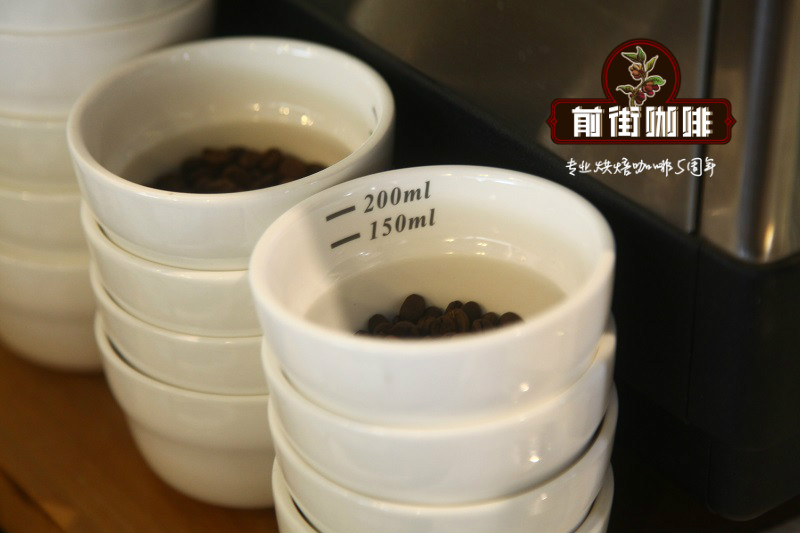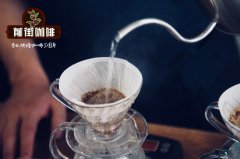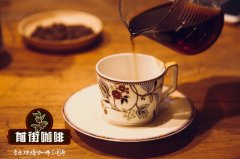What does washing, sun, honey mean? Introduction to coffee processing and promotion of high sweetness coffee beans

Professional coffee knowledge exchange more coffee bean information please follow the coffee workshop (Wechat official account cafe_style)
[preface]
Recently, many friends like to drink sweet beans, nuts and cocoa. The editor once again satisfies everyone's wishes. Five kinds of beans are [Colombian Cauca], [Honduras zigua], [Queen of Brazil], [Sun Sidamo Sakuran], [Costa Rican Black Honey], each has its own characteristics.
[Colombia Coca Zhuoyu Cup]
Micro-area: Suri micro-production area
Since 2014, there have been competitions like the Cauca Best Cup Cup, coffee bean competitions, in addition to our common national-level competitions, such as the Best of Panama in Panama or the COE Excellence Cup held by the Central and South America Association, Cauca Province itself will also hold regional competitions.
So, what is COE (Cup of Excellence)? It is the most important boutique coffee bean competition in the world. First held in Brazil in 1999 by the Coffee Excellence Organization (ACE), it is currently the most well-known and authoritative boutique coffee competition in the world and the most credible competition to judge top coffee.
The competition is usually held once a year, when the growers of boutique coffee submit their best beans to the national or international censors. The coffee must accept the strict rules of the competition, and the winning manor must go through six hurdles, usually 500 estates are screened to end up with less than 30. So Coca Zhuoyue Cup and COE are two different concept competitions.
Jointly organized by well-known American traders, local exporters and the Colombian Coffee Association. About 200 samples were received in the first Coca Cup in 2014, compared with more than twice the number in 2015. About 500 small farmers will compete for the competition, and the organizers will select the top 30 from more than 500 samples. The top 12 will be selected by the international jury Cup, and raw bean sellers and bakers from all over the world will bid on the last day of the event.
This not only increases the income of small farmers and improves their living conditions, but also makes them more willing to invest and improve their coffee production to produce higher quality coffee.
Cauca province is a certified coffee producing area in Colombia, with an average elevation of 1758m and a maximum elevation of 2100m. The topography, precipitation, temperature and volcanic soil of the area prepare suitable conditions for the growth of coffee. The central mountain system includes two major volcanoes, Sotara and Petacas, which are rich in nutrients and have an average daily temperature of 11 ℃, while the daytime average temperature is 18 ℃. The temperature difference between day and night makes the coffee fruit more fully absorb the nutrients of the coffee fruit. The dry season mainly occurs from August to September every year, and the later rainy season brings a concentrated coffee flowering season. This was followed by the next year's concentrated coffee harvest.
The planting variety is Kaddura, the variety of bourbon has better production capacity and disease resistance than bourbon, and the tree is shorter, easy to harvest, the flavor is comparable to or slightly worse than bourbon beans, and more importantly, it is super adaptable and does not need shade trees. direct exposure to the sun can also be full of vitality, can adapt to high-density planting.
After washing with full water, peeling the pulp and putting it into the fermentation tank for 16 hours, the fermentation bacteria will dissolve the pectin, and finally the scaffolding will dry it in the sun, making its lime acid flavor more obvious, grape juice sour, rich flower aroma, high acidity, pleasant sweetness, medium mellowness, nut aftertaste, overall purity, mild, smooth texture, balanced and lively layered taste.
Flavor: obvious lime acid, sour grape juice, rich floral aroma, high acidity, pleasant sweetness, medium mellow, nut finish, overall purity, mild, smooth texture, balanced, lively and changeable layered taste.
[Honduras zigua SHB]
Honduras is located in the north of Central America, facing the Caribbean Sea to the north, the Gulf of Fonseca in the Pacific Ocean to the south, Nicaragua and El Salvador to the east and south, and Guatemala to the west, mostly mountains and plateaus. It has a tropical climate, mild temperature and abundant rainfall, so it is an ideal place for coffee growth.
Bourbon is mainly grown in Honduras, one is "Highland Coffee" growing at an altitude of 1000m to 1500m, and the other is "selected Highland Coffee", which represents the highest level in Honduras, growing at an altitude of 1500m to 2000m.
Bourbon species, the second species mutated from the iron pickup, is the closest to the original species, which is found on the island of Reunion near Madagascar. The leaves are relatively broad, the growth is more dense, although the seed setting is higher than the tin card, but the harvest time is also 2 years, it is also a variety with low yield, but it has a high-quality taste, like the sour taste of red wine, and the aftertaste is sweet. Coffee bean granules are large in shape, uniform in size, uniform in color and glossy. In order to facilitate harvesting, farmers will prune coffee trees to no more than 150 centimeters.
Using the way of sun drying after washing, so that the coffee fruit has a rich and mellow taste, taste is not astringent but not sour, mellow and aroma are very high.
Flavor: baked nuts, milk chocolate, caramel, slight bitterness, overall well balanced, with a sweet finish.
[Queen's Manor of Brazil]
FazendaRainha (Queen Farm) is located in the Alta Mogiana area of Sao Paulo State (SaoPaulo), north of the city of S ã o Paulo. This manor is well-known in Brazil, owned by the Carvalho Dias family, whose family has four major estates, while FazendaRainha has a history of a hundred years, hoping to be shortlisted for awards and difficult to get, and has won many COE awards in successive years. There are 200mu of Huangbo coffee trees planted in the manor, because of the undulating mountains, so the coffee needs to be picked by hand.
Located in the high mountain area of S ã o Paulo near the Minas border, 1200 to 1400 meters above sea level, the annual rainfall is more than 1800 mm, but it will not cause torrential rain, and the average annual temperature is only 19 ℃. Therefore, the growth of bean fruit is slightly slower, but the texture density is large enough. Although the yield is less and half-sun treatment is adopted after hand-picking, a small amount of water is used to remove the pulp and peel first. Then put the coffee directly on the drying rack and turn it over and over to ensure that all the coffee is exposed to the sun, and after a few days of drying, it is mechanically dried to reach the right water content.
This bean is a bourbon, a variety of iron pickup, and its provenance can be traced back to the island of Reunion in Madagascar, where Bourbon originated. French explorers first brought coffee here in the 18th century, so this variety is also known as a French missionary; in the 20th century, it was brought to the African continent and then introduced to Brazil, and its derived varieties are now all over Africa and America. The bourbon species grown in Brazil have yellow fruits due to the influence of their recessive genes.
Flavor: delicate nutty, fruity, creamy peanut, slightly tropical fruit aroma, caramel finish.
[Sidamo Sakuran]
Sidamo boutique production area (Sidama) is located in southern Ethiopia. The industry here is mainly agricultural, and the coffee growing area is located around the East African Great Rift Valley (GreatRift Vallley). The biggest advantage of the area is that the soil fertility is maintained through the circulation of organic matter, using the withered leaves of the surrounding trees or the residual roots of the plants as fertilizer. Therefore, the coffee produced in cities and towns has obvious differences and characteristics.
Huakui is located in Xida Mohambela, the largest coffee producing area in Ethiopia, and the administration is subordinate to Oromiya. The west of Humbera is across the mountain from Yega Ficochel, and the north-east is connected with the shakiso,Uraga and Kerchaz producing areas of Guji respectively. It is the highest coffee producing area in Ethiopia, with humus-rich reddish brown soil, about 2300 meters above sea level, and a large temperature difference between day and night, which makes the coffee fruit grow slowly, pick all red fruits, use exquisite sun treatment, African scaffolding to air, limit the thickness of 2 to 3 layers, and change according to the color change after drying. On the 1st-3rd day of drying, manual selection was carried out twice a day, and 10% was selected each time. After turning every three hours, the coffee beans will be covered at noon and night to avoid rain and dew, accurately grasp the degree of fermentation, the whole process lasts as long as 21 days, creating a unique flavor of Sakuran.
Planting local native species, Esser's coffee varieties have been recorded in nearly 2000 varieties, of which 1927 are native varieties with a relatively round appearance and small beans.
Flavor: there are obvious fermented wine, strawberry, jackfruit, peach sweetness, vanilla finish.
[Costa Rican Shumawa Black Honey]
Because Costa Rica is located in the Central American Gorge, it has the natural advantages of sunshine and land, and its climate is reconciled by Pacific and Atlantic currents and sea breezes. The coffee produced in Costa Rica has the characteristics of local micro-climate and soil conditions. With many towering volcanoes up to 2000 meters above sea level, coffee berries have been able to grow slowly in the fertile volcanic ash soil and cool environment at high altitude, giving birth to coffee beans with complete and rich flavor. After years of development, there are eight major producing areas, of which Tarazhu, the central valley and the western valley are the three most well-known and best-quality producing areas.
Finca Sumava de Lourdes is located in the valley of western Costa Rica, near Naranjo, about 1670-1790 meters above sea level. The varieties Kaddura and Kaduai are natural varieties of Bourbon.
Use black honey treatment, retain nearly 80% pectin, put it on an elevated bed, build a shade to bask in the sun for about 20 days, reduce direct sunlight exposure, dry for longer, need to flip these beans more frequently, reduce moldy beans, and make sugar conversion more fully.
Flavor: rich fruit acid, caramel, black sugar, flower, citrus, grapefruit, sweet spice flavor.
These five sweet beans, [Queen of Brazil] [Honduras] prefer nutty and almond flavor; [Colombian Cauca] [Costa Rican black honey] is rich in acid; [Sidamo Sakuran] is fresh, sweet and delicious. I hope you like it.
Related recommendation: is hand-made coffee really good? Why does coffee smell better than it tastes?
Important Notice :
前街咖啡 FrontStreet Coffee has moved to new addredd:
FrontStreet Coffee Address: 315,Donghua East Road,GuangZhou
Tel:020 38364473
- Prev

The influence of water quality on coffee brewing what kind of water is better for brewing coffee
Professional coffee knowledge exchange more coffee bean information please follow the coffee workshop (Wechat official account cafe_style) 01 | Preface we know that the main factors affecting coffee are origin, roasting, grinding, water temperature, proportion, brewing method, freshness, and water quality. No matter what kind of factors, it is to study the influence of various factors on coffee flavor from a scientific point of view.
- Next

How long does the coffee grow beans? how long can the coffee beans be kept?
Professional coffee knowledge exchange more coffee bean information please follow the coffee workshop (Wechat official account cafe_style) I do not know if you have had the same experience as the editor: just bought coffee beans, can not wait to drink, found that how to adjust the brewing data is not ideal, the result rushed to the 4th and 5th day, suddenly changed to taste good, thought that finally found a suitable brewing method, but
Related
- Beginners will see the "Coffee pull flower" guide!
- What is the difference between ice blog purified milk and ordinary milk coffee?
- Why is the Philippines the largest producer of crops in Liberia?
- For coffee extraction, should the fine powder be retained?
- How does extracted espresso fill pressed powder? How much strength does it take to press the powder?
- How to make jasmine cold extract coffee? Is the jasmine + latte good?
- Will this little toy really make the coffee taste better? How does Lily Drip affect coffee extraction?
- Will the action of slapping the filter cup also affect coffee extraction?
- What's the difference between powder-to-water ratio and powder-to-liquid ratio?
- What is the Ethiopian local species? What does it have to do with Heirloom native species?

